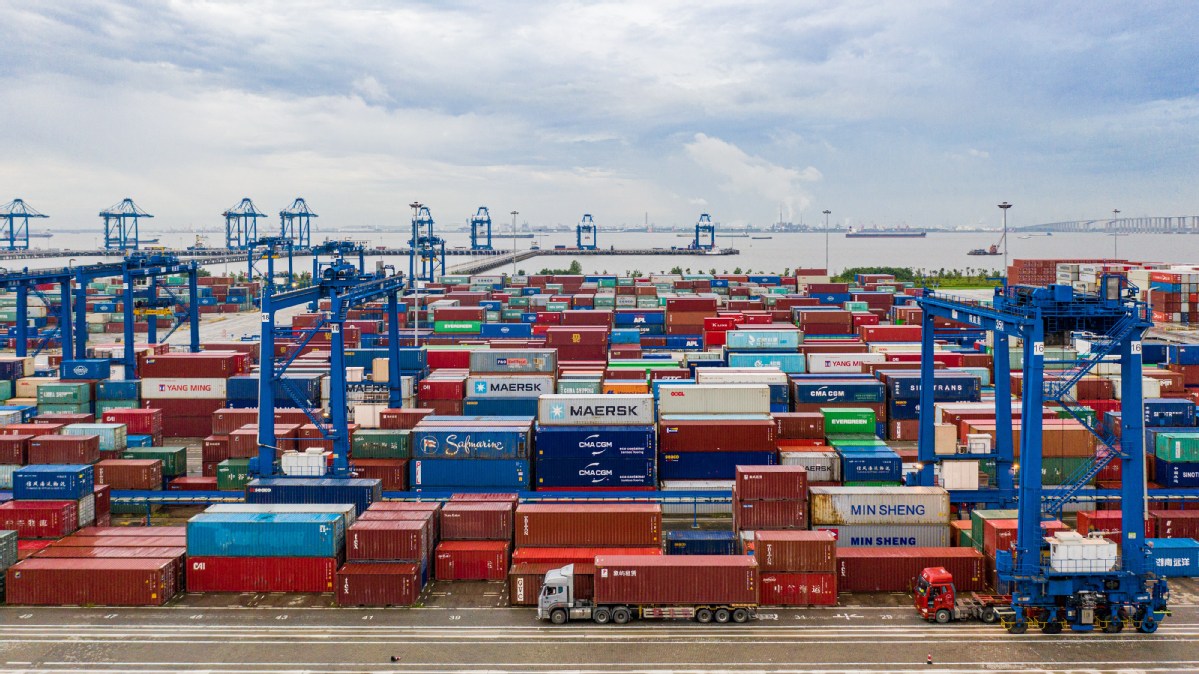China's foreign trade sustains upward momentum under pressure


BEIJING -- China's foreign trade maintained an upward momentum in the first seven months of the year, although uncertainties of global economic recovery have put more pressure on the country's exports.
The country's total imports and exports expanded by 24.5 percent year-on-year to 21.34 trillion yuan (about $3.29 trillion) from January to July, showed data from the General Administration of Customs.
The figures showed the resilience of China's foreign trade, as it recorded double-digit growth even compared with the pre-pandemic level during the same period in 2019, said GAC official Li Kuiwen.
In July alone, the country's imports and exports rose by 11.5 percent year-on-year to 3.27 trillion yuan, representing a yearly increase in China's foreign trade for 14 consecutive months, customs data showed.
However, the figure represented a month-on-month decline of 0.8 percent. It indicates increasing pressure on exports, said Bai Ming, a researcher with the Chinese Academy of International Trade and Economic Cooperation under the Ministry of Commerce.
New rounds of COVID-19 outbreaks have brought uncertainties to world economic recovery, analysts said.
In Southeast Asia, one of the world's major manufacturing bases, countries such as Indonesia, Thailand, Vietnam, and Malaysia have been affected by the pandemic. Lockdown measures in some countries have led to increasing port congestion.
"Our products could not go out, and freight prices are on the rise all the time," said Dong Lili, deputy general manager of the marketing center of Zhejiang Wanma Macromolecule Materials Co Ltd.
The company's macromolecule materials for cables are mainly sold to the Association of Southeast Asian Nations, the Middle East, and South America. Ninety-five percent of these materials are shipped by sea.
High raw material prices, continuously rising logistics costs, and fluctuations in the RMB exchange rate also posed challenges to foreign trade enterprises, said Bai.
With increasing vaccination rates and gradual restoration of productivity worldwide, foreign countries have become less dependent on China's production capacity, said Bai.
It is also one of the reasons for the decline of exports, Bai said.
But these challenges have not dampened the vitality of China's foreign trade.
In the first seven months, imports and exports of private enterprises rose by 31 percent year-on-year, accounting for 47.9 percent of the country's total. It is up by 2.4 percentage points year-on-year.
Positec Technology (China) Co Ltd which produces electrical tools, received 30 percent more orders in July compared to June.
The company's major customers in the United States increased by about 32 percent, and those in Europe increased by about 28 percent as foreign customers stocked up in advance for Black Friday and the Christmas season.
Chinese foreign trade enterprises have also embraced changes to seize development opportunities.
While continuing to transport products through sea shipping, Positec Technology (China) Co Ltd also sent products to Europe through China-Europe freight train services in April this year. The company has also been actively developing its cross-border e-commerce business.
Facing challenges and uncertainties from the pandemic, Chinese foreign trade companies remained cautiously optimistic.
Dong sees opportunities to introduce cable materials from Zhejiang Wanma Macromolecule Materials Co Ltd into the relatively exclusive foreign market and expects these exports to rise slightly throughout the year.
Tu Xinquan, a professor at the University of International Business and Economics, said China's role in maintaining the stability of global industrial and supply chains is irreplaceable.
The risks and challenges currently facing China's foreign trade generally come from outside. It is forcing foreign trade enterprises to accelerate transformation and upgrading, seize the opportunity of the global industrial chain and supply chain reconstruction, and grasp the development trend of new business in foreign trade, said Tu.




































